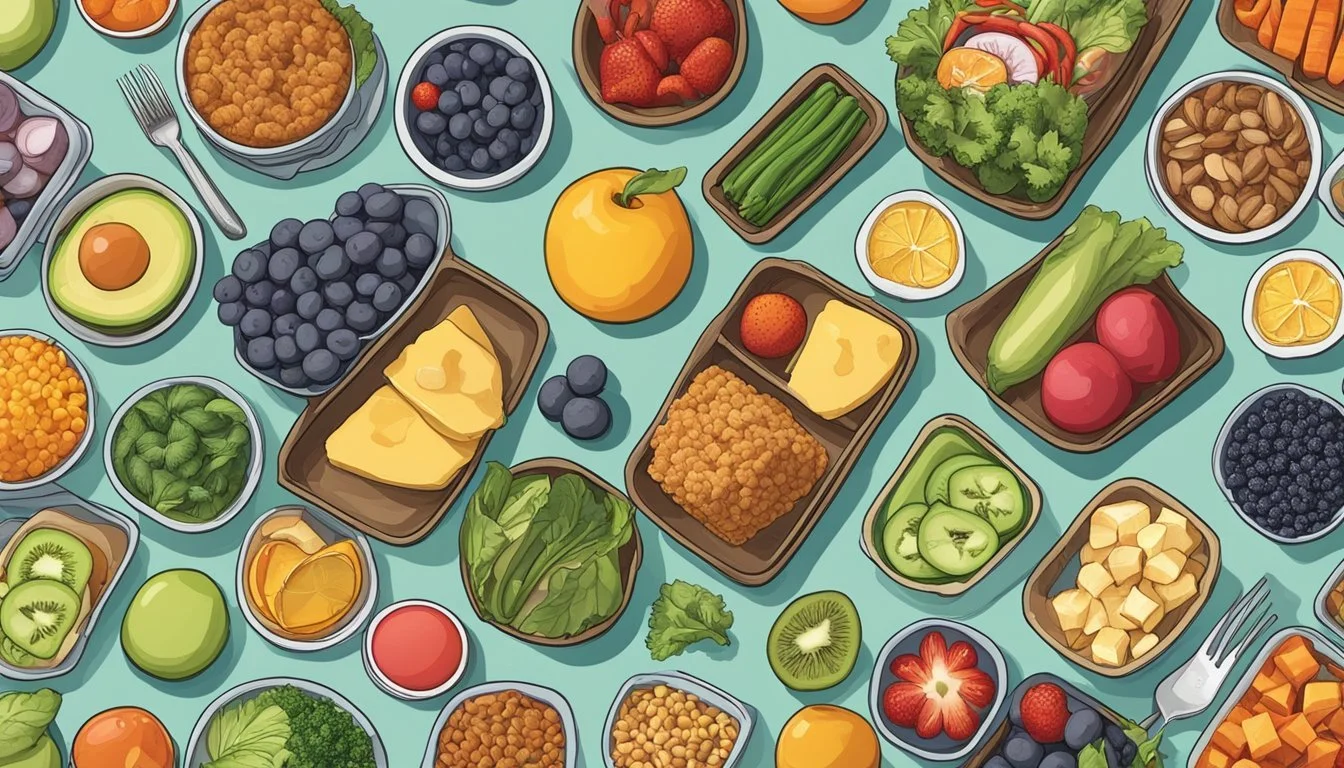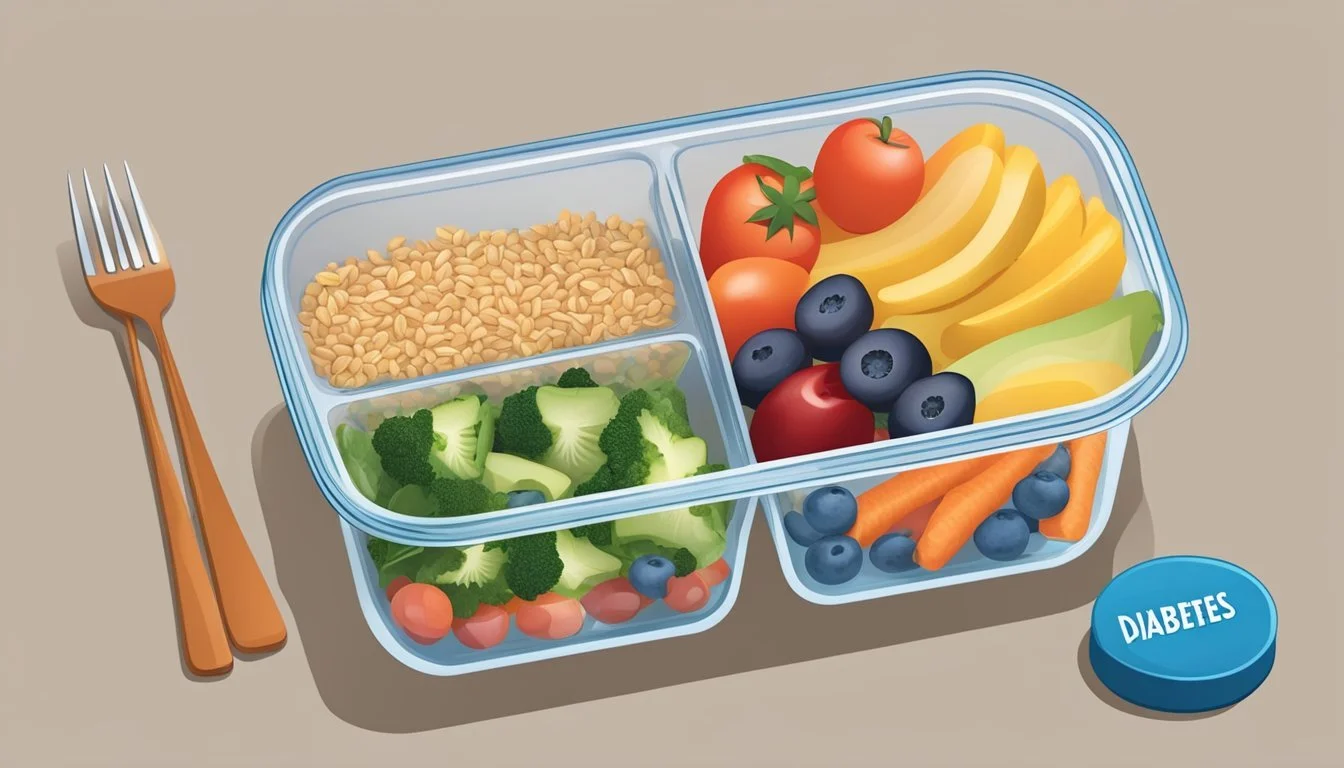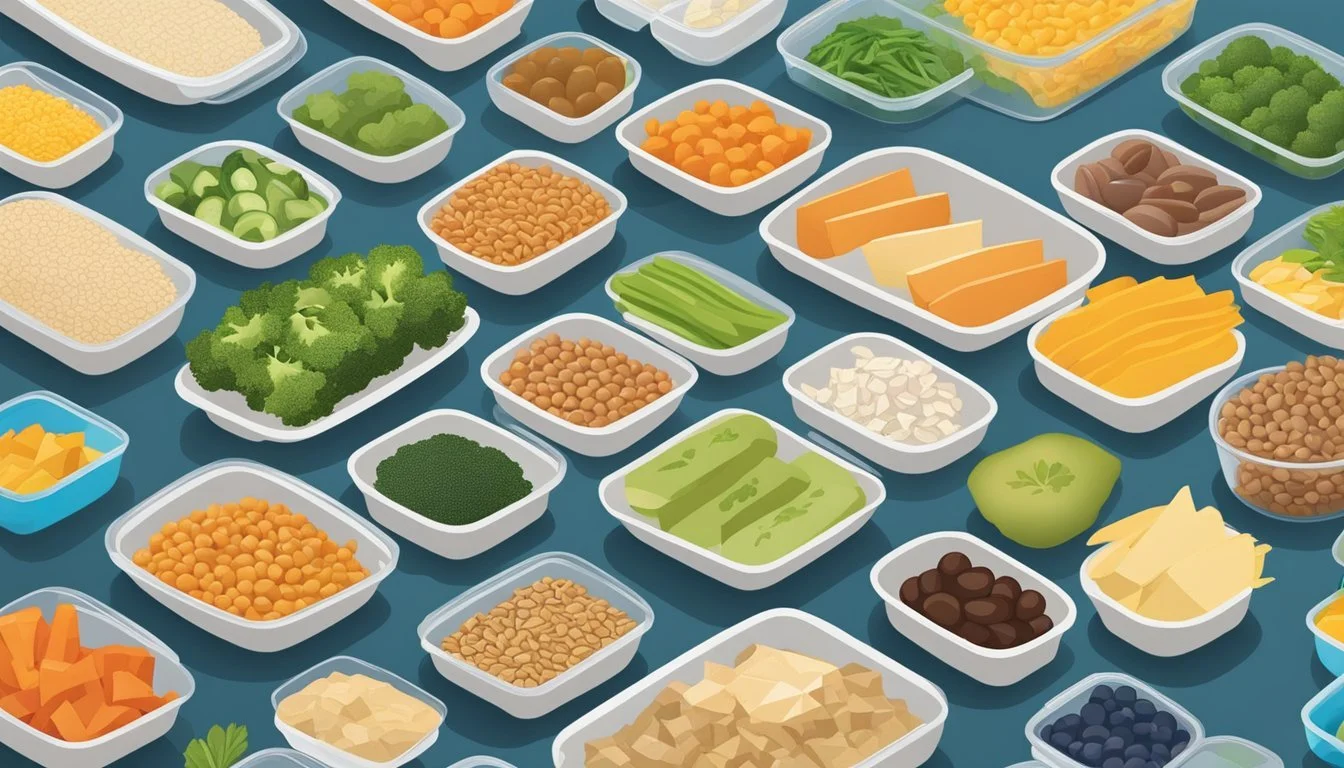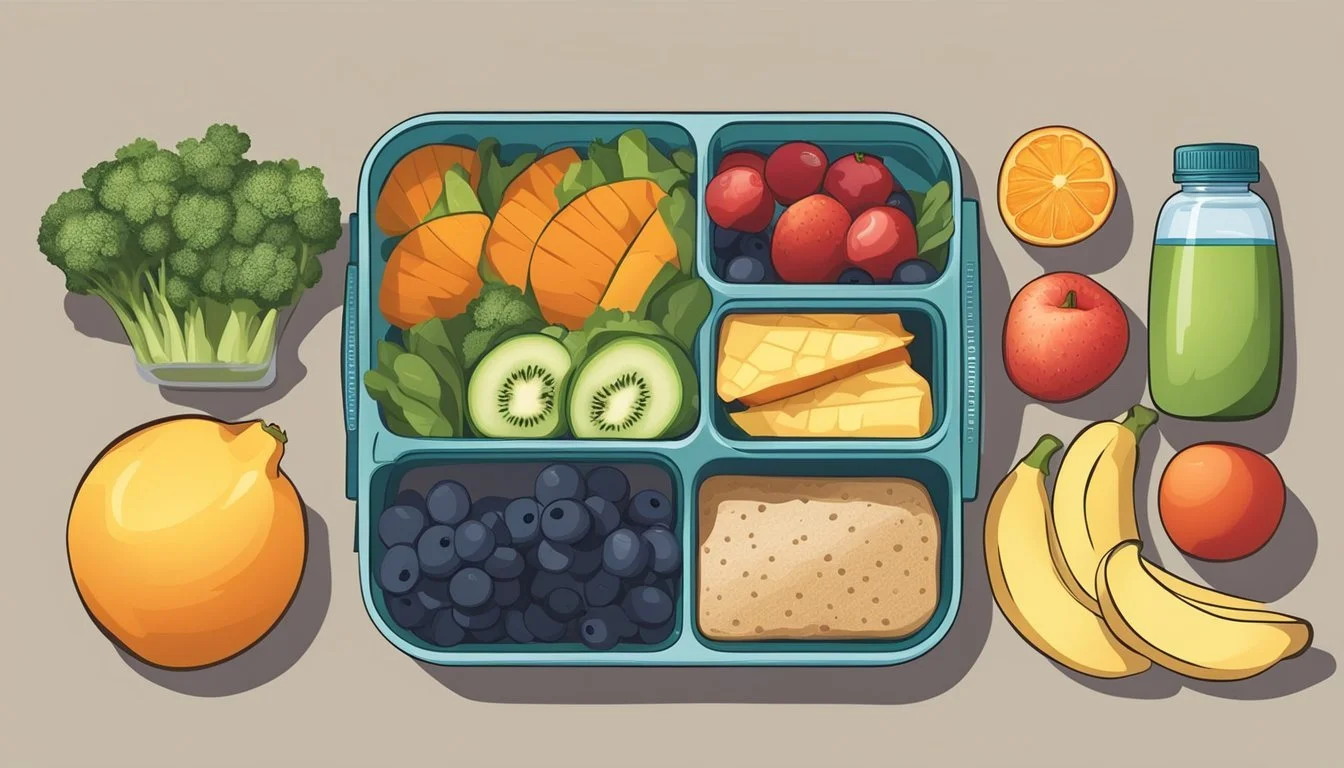Best Diabetes Lunch Containers for Easy Portion Control and Blood Sugar Management
Managing diabetes requires careful attention to diet, including what and how you eat. Proper meal planning and portion control are essential for maintaining stable blood sugar levels. Diabetes lunch containers can be valuable tools in this process, helping individuals pack balanced, portion-controlled meals for work, school, or on-the-go.
Specialized diabetes lunch containers typically feature compartments for different food groups, making it easier to create well-balanced meals with appropriate portions of proteins, carbohydrates, and vegetables. These containers often come with built-in ice packs to keep food fresh and safe for consumption. Some even include nutritional guides or portion indicators to assist users in making informed food choices.
Using diabetes-friendly lunch containers can simplify meal prep and encourage healthier eating habits. They provide a structured approach to packing lunches that align with dietary recommendations for managing blood sugar levels. With the right container, individuals with diabetes can enjoy convenient, nutritious meals while maintaining better control over their condition.
Understanding Diabetes and Nutrition
Managing diabetes requires a careful approach to nutrition. Proper food choices and meal planning play a crucial role in maintaining stable blood sugar levels and overall health for those with diabetes.
The Role of Blood Sugar Control
Blood sugar control is essential for diabetes management. Consistently high blood sugar can lead to serious health complications. Monitoring carbohydrate intake is key, as carbs have the most significant impact on blood glucose levels.
Eating regular, balanced meals helps prevent blood sugar spikes and dips. Spreading carbohydrate consumption throughout the day supports more stable glucose levels. Pairing carbs with protein and healthy fats can slow digestion and reduce rapid blood sugar increases.
Balanced Meal Composition for Type 2 Diabetes
A balanced meal for type 2 diabetes focuses on nutrient-dense foods. The plate method is a simple guide: fill half with non-starchy vegetables, a quarter with lean protein, and a quarter with complex carbohydrates.
Non-starchy vegetables: broccoli, spinach, carrots Lean proteins: chicken, fish, tofu Complex carbohydrates: whole grains, legumes, sweet potatoes
Including healthy fats like avocado or olive oil supports satiety and nutrient absorption. Portion control is crucial for managing calorie intake and maintaining a healthy weight, which is important for diabetes management.
Glycemic Index and Diabetes-Friendly Foods
The glycemic index (GI) measures how quickly foods raise blood sugar levels. Low-GI foods are generally better choices for people with diabetes.
Low-GI foods (55 or less):
Most fruits and non-starchy vegetables
Whole grains (oats, barley, quinoa)
Legumes (lentils, beans)
Medium-GI foods (56-69):
Whole wheat bread
Brown rice
High-GI foods (70 or more):
White bread
Sugary snacks
Choosing low-GI foods can help manage blood sugar levels more effectively. Combining high-GI foods with low-GI options or protein can help balance the overall glycemic impact of a meal.
Essential Nutrients for Diabetes Lunches
A well-balanced diabetes lunch should include key nutrients to help manage blood sugar levels and support overall health. These essential components work together to provide sustained energy and promote optimal nutrition.
Proteins and Lean Protein Sources
Protein is crucial for maintaining stable blood glucose levels and promoting satiety. Lean protein sources are ideal for diabetes management. Options include:
Grilled chicken breast
Baked fish (salmon, tuna, cod)
Tofu or tempeh
Low-fat Greek yogurt
Hard-boiled eggs
Turkey slices
Aim for 3-4 ounces of protein per meal. These choices are low in saturated fat and help slow down carbohydrate absorption, preventing rapid blood sugar spikes.
The Importance of Fiber in Diet
Fiber plays a vital role in diabetes management by slowing digestion and stabilizing blood sugar levels. High-fiber foods include:
Whole grains (quinoa, brown rice, oats)
Legumes (lentils, chickpeas, black beans)
Vegetables (broccoli, carrots, spinach)
Fruits (berries, apples, pears)
A diabetes-friendly lunch should contain 7-10 grams of fiber. Fiber-rich foods also promote feelings of fullness, aiding in weight management.
Healthy Fats and Cardiovascular Health
Including healthy fats in diabetes lunches supports heart health and helps with nutrient absorption. Beneficial fat sources are:
Avocado
Nuts (almonds, walnuts, pistachios)
Seeds (chia, flax, pumpkin)
Olive oil
Fatty fish (salmon, mackerel, sardines)
Aim for 1-2 tablespoons of healthy fats per meal. These fats can help reduce inflammation and improve insulin sensitivity.
Vitamins, Minerals, and Antioxidant-Rich Foods
A nutrient-dense lunch should include a variety of vitamins, minerals, and antioxidants to support overall health. Focus on:
Colorful vegetables (bell peppers, tomatoes, leafy greens)
Berries (strawberries, blueberries, raspberries)
Citrus fruits (oranges, grapefruits)
Nuts and seeds
Whole grains
These foods provide essential nutrients like vitamin C, vitamin E, zinc, and selenium. They help protect cells from oxidative stress and support immune function.
Building the Perfect Diabetes Lunch Container
Crafting an ideal diabetes lunch container involves thoughtful planning and smart choices. Proper portion control, nutrient-dense ingredients, and diabetes-friendly options are key elements to consider.
Choosing the Right Containers for Portion Control
Selecting appropriate containers is crucial for managing portion sizes. Opt for divided containers with separate compartments to easily control portions of different food groups. Bento-style boxes work well, allowing for a balanced mix of proteins, carbohydrates, and vegetables.
Look for containers with clear lids to easily identify contents. Containers with built-in ice packs help keep foods fresh and safe. Choose BPA-free, microwave-safe options for convenience and safety.
Consider stackable containers to save space in your bag or refrigerator. Smaller containers within larger ones can hold dressings or sauces separately, preventing sogginess and allowing better portion control.
Creating Nutrient-Dense Lunch Options
Focus on incorporating a variety of nutrient-dense ingredients into your lunch containers. Include lean proteins like grilled chicken, turkey, or tofu to help stabilize blood sugar levels.
Add fiber-rich foods such as whole grains, legumes, and vegetables to slow digestion and promote satiety. Quinoa, brown rice, or whole wheat pasta make excellent bases for salads or grain bowls.
Include healthy fats like avocado, nuts, or olive oil to help slow glucose absorption. Don't forget colorful vegetables - aim for at least half your container to be filled with non-starchy options like leafy greens, bell peppers, or cucumber.
Diabetes-Friendly Lunch Ideas
• Greek salad with grilled chicken, feta, and olive oil dressing • Turkey and avocado wrap with mixed greens • Quinoa bowl with roasted vegetables and chickpeas • Tuna salad with whole grain crackers and cherry tomatoes • Lentil soup with a side of mixed berries
Mix and match these ideas to create variety. Include a small serving of fruit for natural sweetness. Pair complex carbohydrates with proteins to help maintain steady blood sugar levels.
Consider prepping ingredients in advance for quick assembly. Keep dressings and sauces on the side to control portions. Remember to include a small, diabetes-friendly snack for between meals if needed.
Smart Ingredient Selections
Choosing the right ingredients is crucial for managing diabetes through diet. Focusing on nutrient-dense foods helps maintain stable blood sugar levels and promotes overall health.
Lean Proteins and Plant-Based Alternatives
Lean proteins are essential for a balanced diabetic lunch. They provide satiety without spiking blood sugar. Opt for:
• Skinless chicken breast • Turkey • Fish (salmon, tuna, mackerel) • Eggs • Tofu • Tempeh • Seitan
Plant-based proteins offer additional benefits:
• Lentils • Chickpeas • Black beans • Edamame
These options are rich in fiber and nutrients. They can be easily incorporated into salads, wraps, or grain bowls.
High-Fiber Vegetables and Grains
Fiber-rich foods are key for blood sugar management. They slow digestion and help prevent rapid glucose spikes. Include:
Vegetables: • Leafy greens (spinach, kale, arugula) • Broccoli • Cauliflower • Bell peppers • Zucchini
Whole grains: • Quinoa • Brown rice • Barley • Oats • Whole wheat bread or wraps
These ingredients provide sustained energy and essential nutrients. Mix and match for variety in texture and flavor.
Healthy Snack Additions
Smart snack choices can help maintain steady blood sugar between meals. Consider:
• Nuts (almonds, walnuts, pistachios) • Seeds (pumpkin, sunflower, chia) • Greek yogurt • Cheese sticks • Hard-boiled eggs • Vegetable sticks with hummus • Berries (strawberries, blueberries, raspberries)
These snacks offer protein, healthy fats, and fiber. They're portable and can easily fit into lunch containers. Portion control is important, especially for calorie-dense options like nuts and seeds.
Recipe Ideas for Diabetes Lunch Containers
Packing nutritious and balanced meals is essential for managing diabetes. These recipes focus on low glycemic impact ingredients, lean proteins, and fiber-rich foods to help maintain stable blood sugar levels.
Salads and Bowls with Low Glycemic Impact
Mixed greens form an excellent base for diabetes-friendly salads. Top with grilled chicken, salmon, or tuna for lean protein. Add colorful vegetables like bell peppers, cucumbers, and cherry tomatoes for extra nutrients and fiber.
Quinoa bowls offer a versatile option. Combine cooked quinoa with roasted vegetables, chickpeas, and a sprinkle of feta cheese. Drizzle with olive oil and lemon juice for a zesty dressing.
A Greek-inspired salad with cucumber, tomatoes, olives, and a small amount of feta cheese provides Mediterranean flavors. Include a hard-boiled egg for added protein.
Wholesome Wraps and Sandwiches
Whole grain tortillas or bread make excellent choices for wraps and sandwiches. Fill with lean turkey, avocado slices, and plenty of vegetables for a satisfying meal.
A tuna salad wrap can be prepared using Greek yogurt instead of mayonnaise. Mix in celery and red onion for crunch, then wrap in a whole wheat tortilla with leafy greens.
For a vegetarian option, spread hummus on a whole grain wrap and add roasted vegetables, spinach, and a sprinkle of sunflower seeds.
Hearty Soups and Stews
Lentil soup packed with vegetables offers a fiber-rich meal that helps stabilize blood sugar. Prepare a batch and portion into individual containers for easy grab-and-go lunches.
Chicken and vegetable soup made with low-sodium broth provides warmth and nutrition. Include a variety of non-starchy vegetables like zucchini, carrots, and celery.
Bean-based stews offer plant-based protein and fiber. Try a three-bean chili with bell peppers and onions, seasoned with cumin and chili powder for added flavor.
Pack soups and stews in insulated containers to keep them hot until lunchtime. Include a side of whole grain crackers or a small piece of fruit for a complete meal.
Managing Portions and Macronutrients
Effective portion control and balanced macronutrient intake are crucial for managing diabetes. These strategies help regulate blood sugar levels and support overall health.
Understanding Portion Sizes for Satiety
Proper portion sizes are essential for blood sugar control and maintaining a healthy weight. A 9-inch plate can serve as a visual guide. Fill half with non-starchy vegetables, one-quarter with lean proteins, and one-quarter with complex carbohydrates.
Using measuring cups or a food scale can help ensure accurate portions. Pre-portioned containers with separate compartments are useful tools for packing balanced meals.
Eating smaller, more frequent meals throughout the day can help maintain steady blood sugar levels. This approach may also increase satiety and prevent overeating.
Balancing Carbohydrates, Proteins, and Fats
A balanced intake of macronutrients is key for managing diabetes. Carbohydrates have the most significant impact on blood sugar levels. Focus on complex carbohydrates like whole grains, legumes, and vegetables.
Aim for consistent carbohydrate intake at each meal. This helps with insulin dosing and blood sugar management.
Protein aids in satiety and has minimal effect on blood sugar. Include lean sources like chicken, fish, tofu, or legumes in each meal.
Fats are important for nutrient absorption and hormone production. Choose unsaturated fats from sources like avocados, nuts, and olive oil.
A dietitian can help create a personalized meal plan tailored to individual needs and preferences.
Tips for Prepping and Storing Meals
Effective meal preparation and storage are key for managing diabetes through healthy lunches. Proper techniques save time, ensure balanced nutrition, and maintain food freshness throughout the week.
Meal Prep Strategies for Busy Lifestyles
Dedicate a few hours on weekends for batch cooking. Roast a variety of vegetables at 450°F with a lime juice and honey marinade for added flavor. Cook lean protein sources like skinless chicken in larger quantities. Prepare whole grains such as quinoa or brown rice in advance.
Use the Diabetes Plate Method to portion meals. Fill half the plate with non-starchy vegetables, a quarter with lean protein, and a quarter with complex carbohydrates. Transfer these portions into meal prep containers for easy grab-and-go lunches.
Create at least two different meal options each week to avoid monotony. Vary ingredients or seasoning to keep lunches interesting. Consider making a large batch of diabetes-friendly chili or soup that can be portioned out for multiple days.
Storing Tips for Freshness and Convenience
Invest in high-quality, airtight containers to keep food fresh longer. Use glass containers for reheating meals safely in the microwave. Opt for divided containers to keep different food groups separate and maintain textures.
Store prepared meals in the refrigerator for up to 4 days. Label containers with contents and dates to track freshness. For longer storage, freeze meals in individual portions for up to 3 months.
Keep salad greens crisp by storing them separately with a paper towel to absorb excess moisture. Pack dressings in small containers on the side to prevent soggy vegetables. Use a thermos for soups or hot dishes to maintain temperature until lunchtime.








